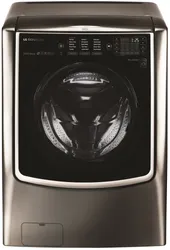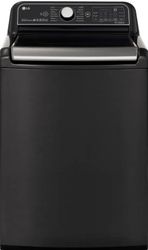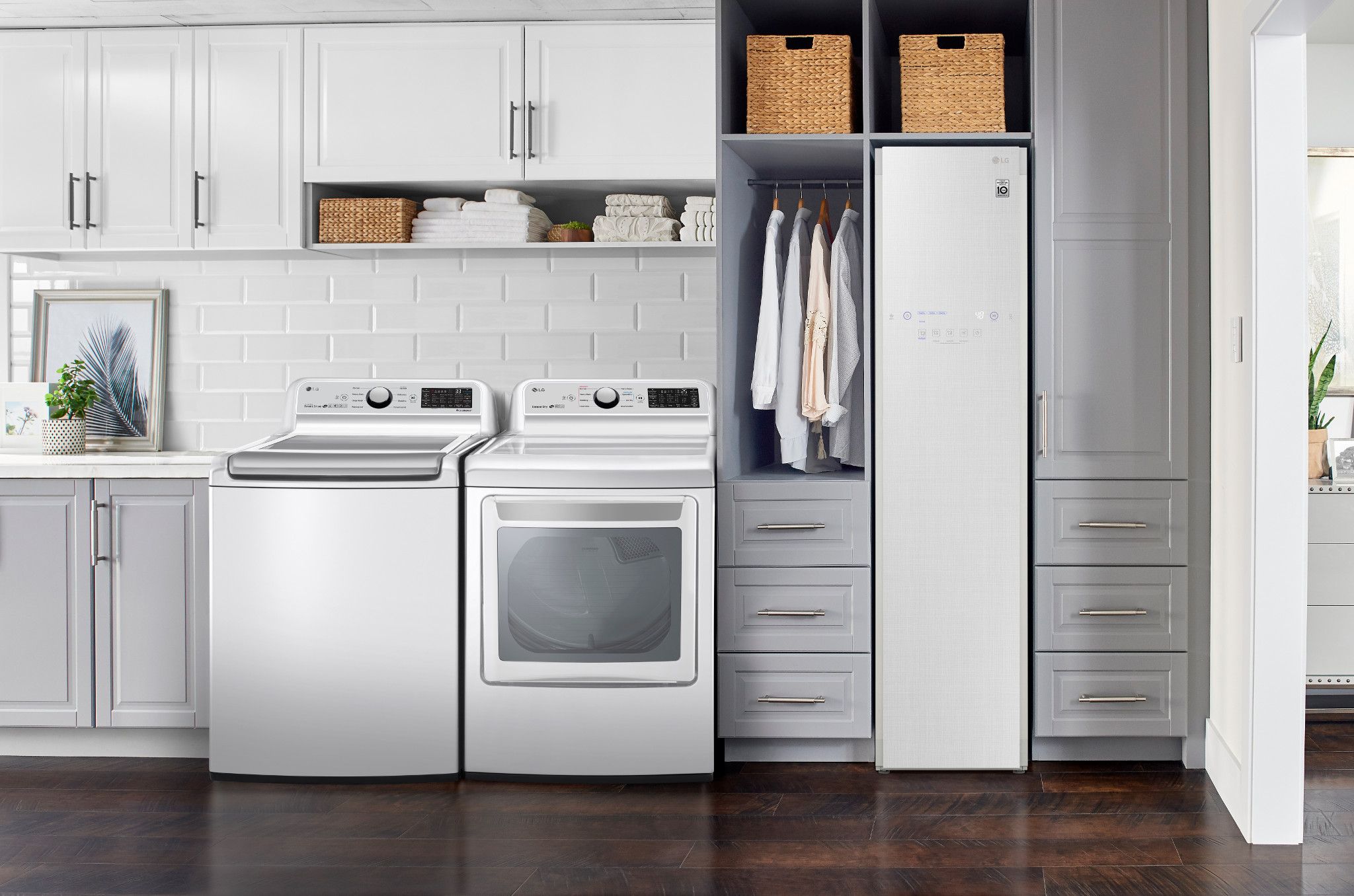
At a Glance:
Top Load vs Front Load Washers Comparison Chart
Top Load Washers: Pros and Cons
Front Load Washers: Pros and Cons
Once it’s time to buy a new washing machine, how do you know which type to choose? You have your choice of a traditional top load washer or a trendy and efficient front load washer. For the longest time, top load washing machines were your only option, but we have now seen a surge of dynamic top load and front load washers from every major appliance manufacturer.
Both top load and front load washers come with their advantages and disadvantages, but which one is better? Our team at Albert Lee decided to compare each product and assess this question in our latest blog.
Explore Washer Styles
There is no one size fits all solution when it comes to laundry. Find the washing machine that's right for you at Albert Lee.
In-Stock NowTop Load vs Front Load Washer Comparison Chart
The chart below donates key appliance features and how they compare between top load washer vs front load washer models.
| Product Attributes | Top Load Washers | Front Load Washers | |
|---|---|---|---|
| Sleek Appearance |
✅
|
✅
| |
| Front Load vs Top Load Washing Machine Power Consumption | 400-1,400 watts | 200-1,000 watts
| |
| Front Load vs Top Load Water Usage | 13-19 gallons |
About 7 gallons
| |
| Easier Installation | ✅ | Requires more work if stacking
| |
| Front Load vs Top Load Washer Cost | $400-$1,000 |
$700-$1,500
| |
| Front Load vs Top Load Washer Reliability | About 14 years |
About 11 years
| |
| Cleaning Performance | Agitation (heavy duty) |
Tumble (gentler)
| |
| Front Load Washer Capacity vs Top Load (cu. ft.) | 3.5-5.6 |
2.3-6
| |
| Quiet Washer | Agitators can be noisy |
✅
| |
| Wash Speed | About 1 hour | 1-2 hours
| |
| Stackable Washer | ❌ |
✅
| |
Top Load Washers Overview
Traditoinal top loading washing machines have been around for decades, and that means they're the model most users are familiar with. The design is still popular today, but with the introduction of front load washers, today's buyers are weighing top load washer pros and cons more than before. Here's a quick front load washer vs top load side-by-side breakdown that provides a look at each side of the coin.
Pros:
✅ Top load washers require virtually no learning curve.
✅ Users can add clothes to a top load washer mid-cycle.
✅ Top load washers are faster than front load washing machines.
✅ Top load washers generally cost less than their counterparts.
Cons:
❌ Top loaders use more water and detergent than front load models.
❌ Heavier clothing items or bedding can be too bulky for top load washing machines.
❌ Agitators can sometimes be noisy.
❌ Top load washers are not stackable.
More About Top Load Washers
A tried-and-true top load washer provides a helpful range of wash cycles in a relatively ergonomic fashion. The height of the appliance makes it easier to load and unload the machine, and most top loaders feature a built-in dispenser, a soft-close lid, and mid-cycle access should you find a stray sock or t-shirt left behind in the hamper.
Because top load washers soak your garments for the full duration of the wash cycle, they use a considerable amount of water. A large cylindrical agitator is placed in the center of the wash drum to rotate against your clothes and facilitate the cleaning process, but you also have your choice of a top load impeller washer, which is a low-profile, bottom-mounted disc that spins to rub clothes against each other to get them clean.
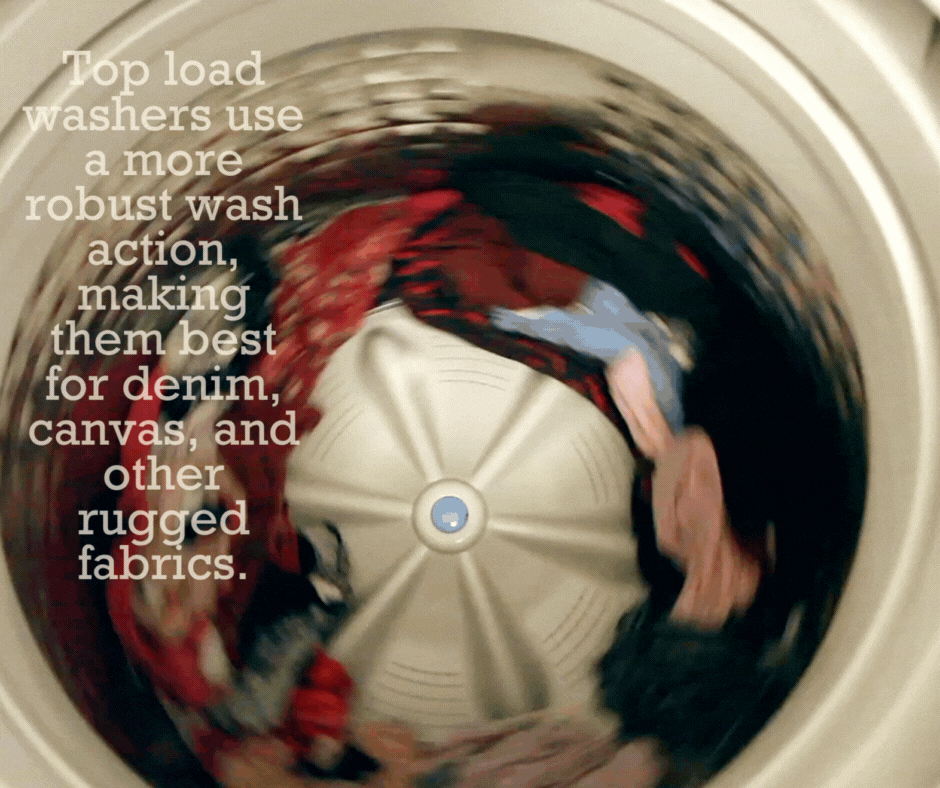 Credit: rustycanuck
Credit: rustycanuck
On the other hand, top load washers are harsher on fabrics and require more detergent to remove stains. They can also be noisy to operate, depending on how they are installed and how you load your washer. If you overload a top load washer and try to squeeze a comforter inside, it may be too tight for the agitator fins to spin and operate properly.
And if space is a concern, top loaders can be an issue since they can't stack and must be installed side-by-side. You may not have the convenience of adding a folding surface in your laundry room, but a matching washer and dryer set will still create a clean and cohesive element in the laundry room.
➝ Learn More: 5 Best Top Load Washers
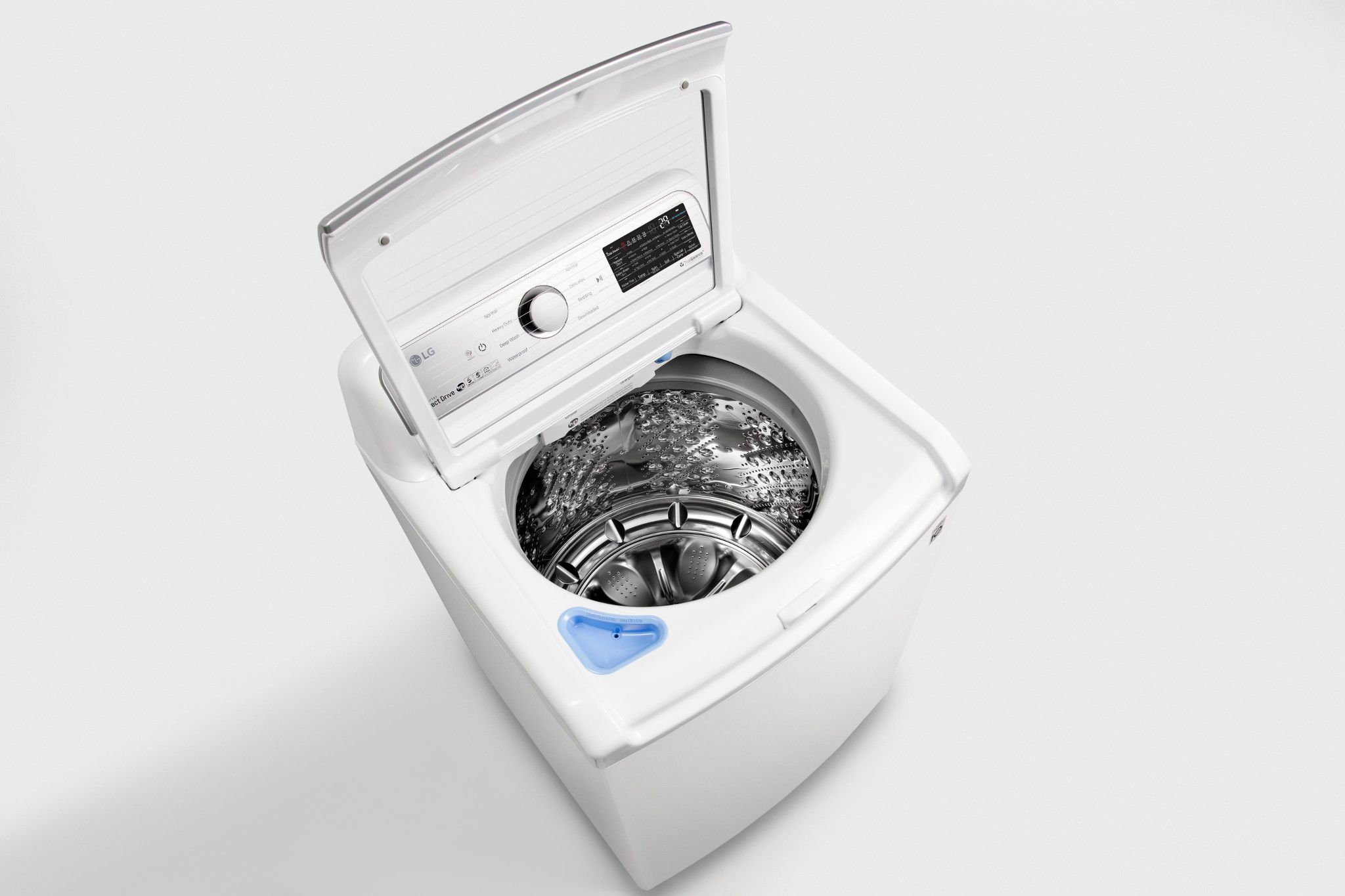
Front Load Washers Overview
When it comes to pros and cons, front load washer models pose their own perks and considerations. Use the points below to compare front load and top load washing machine factors.
Pros:
✅ Front load washer agitation is gentler, which can help extend the lifespan of clothes.
✅ Front loaders are more energy-efficient and use less water than a top loaders.
✅ Users can stack front loaders or install them side-by-side.
Cons:
❌ Washer gaskets and door seals require routine cleaning to avoid mold and mildew growth.
❌ Can’t always stop or add an extra item mid-cycle
❌ Loading and unloading requires more hunching or bending (unless you add a pedestal to your purchase).
➝ Learn More: 4 Irreplaceable Smart Washer and Dryer Features
More About Front Load Washers
Front load washers offer a variety of cleaning functions and capacity levels. The wash drums are larger than those of a top load machine, often able to fit up to 20 pounds of laundry. Instead of taking up space with an agitator or impeller, a front load machine rotates your clothes in different directions through a minimal amount of water instead of fully submerging your fabrics. Each garment is dropped into the water over and over again as the wash drum rotates, which proves to be much gentler on clothes.
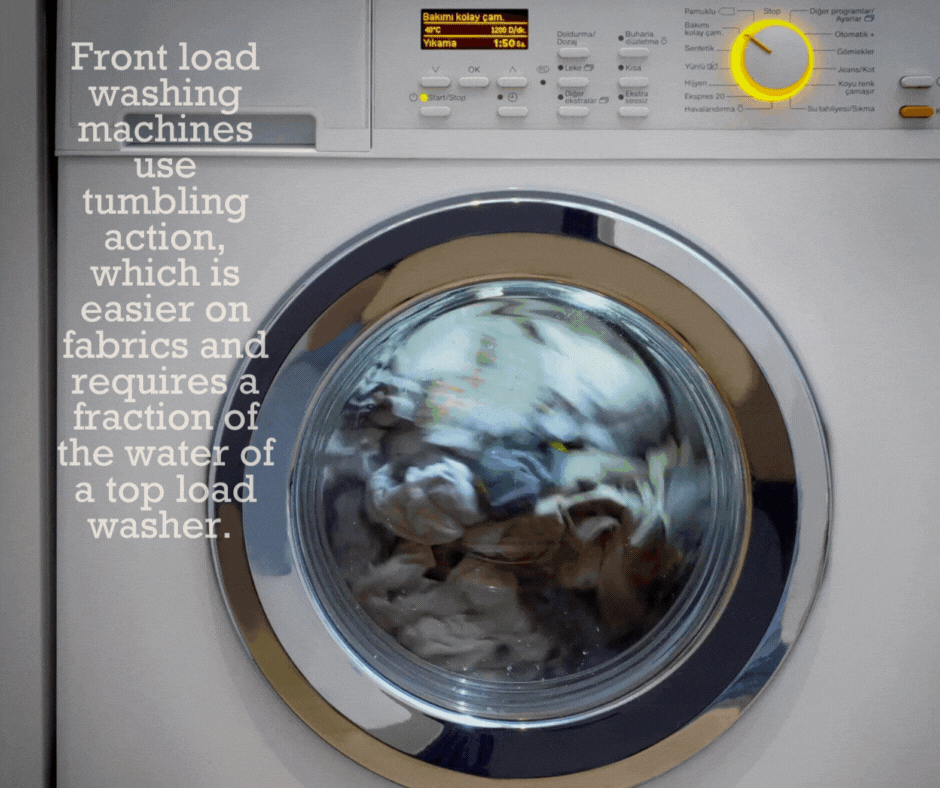 Credit: ugurhan
Credit: ugurhan
Unlike top load washers, front load laundry sets can be stacked to conserve space in your laundry room. There are very few drawbacks to a front load machine, but one issue can be the maintenance that the rubber gasket ring requires on certain washer models. They can be known to trap water droplets inside, which can prevent the seal from fully drying and lead to mold or mildew if not wiped out regularly.
Most front load washers lock the door at the beginning of each cycle to prevent water from spilling out, but this can also prevent the user from adding a last-minute garment to the cycle. However, some newer washer models do have a “pause” feature which would allow you to stop the cycle if need be (but it requires draining the entire tub).
For some, front loaders can be challenging to operate. The act of loading and unloading the machine does require some bending, but the addition of a pedestal can raise your washer unit 12 to 15 inches to ease any potential strain and provide additional storage space.
➝ Learn More: 6 Best Front Load Washers for Easier Laundry Days

Top Load vs. Front Load Washers: A Comparison
When it comes to the front vs top load washing machine debate, both washer types have their own advantages and considerations to keep in mind. Let's compare these two in various aspects to help you make an informed decision (click the ➕ to learn more).
➕Top Load vs Front Load Capacity
In terms of top load vs front load washing machine capacity, top load washers generally have a larger drum capacity. They are designed to accommodate larger loads and bulky items like comforters or blankets. On the other hand, front load washers usually have a slightly smaller capacity but can still handle a significant amount of laundry.
➕Front Load vs Top Load Price
Front load washers tend to be more expensive upfront compared to top load washers. The cost difference can be attributed to the advanced features and technologies that front load washers often incorporate. However, it's worth noting that prices can vary depending on the brand, model, and additional features of the washing machine.
➕Top Load Washing Machine vs Front Load Features
Front load washers often come equipped with a range of features and options. They typically offer more advanced washing cycles, such as steam cleaning, allergen removal, and specialized programs for different types of fabrics. Some front load washers also have smart features that allow you to control and monitor the machine remotely through a smartphone app. Top load washers, while generally simpler in design, still offer essential features like various wash cycles and temperature settings.
➕Front Load vs Top Load Washer Water Usage & Energy Consumption
Front load washers are known for their energy efficiency and water-saving capabilities. They typically use less water and consume less energy per cycle compared to top load washers. Front load washers use a tumbling action and gravity to move clothes through the water, requiring less water to achieve effective cleaning. Additionally, front load washers generally have higher spin speeds, which result in better water extraction, reducing drying time and energy consumption.
➕Front Load vs Top Load Washer Maintenance
In terms of repairs, there isn't a significant difference between top load and front load washers. Both types can require repairs or maintenance over time, depending on factors such as usage, brand, and model. However, it's worth noting that front load washers may require additional care to prevent mold or mildew buildup due to their design. Regular cleaning and proper maintenance can help mitigate this issue.
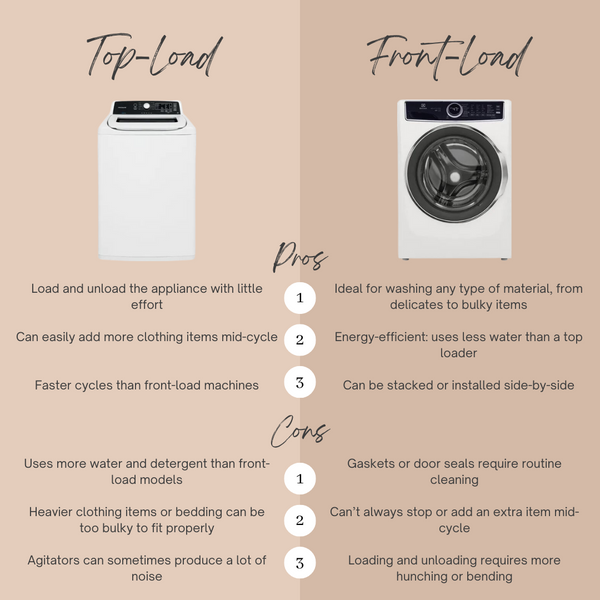
➝ Learn More: Save in Style: 5 Energy Efficient Washer & Dryer Sets [+ Tips]
Impact on Clothing
When it comes to wear and tear on clothing, front load washers are generally considered to be better than top load washers. Here's why:
Agitation Method
Top load washers typically use an agitator or impeller mechanism to move clothes around in the water. While effective at removing stains, the agitator can be more aggressive and cause more friction against the fabric. This increased agitation can potentially lead to more wear and tear on clothing, especially delicate or easily damaged fabrics. Front load washers, on the other hand, use a tumbling action to clean clothes. The clothes gently tumble against each other and the drum, resulting in less friction and reduced wear on fabrics. The tumbling action is particularly gentle on delicate garments, making front load washers a preferred choice for those concerned about preserving the quality and longevity of their clothing.
Load Distribution
Front load washers distribute the weight of the laundry more evenly throughout the drum. This balanced distribution reduces the stress and strain on individual garments, further minimizing wear and tear. In contrast, top load washers with agitators may cause clothing to bunch up or become tangled, which can lead to increased friction and potential damage.
Water Level and Soaking
Front load washers typically use less water compared to top load washers. The reduced water level ensures that the clothes are thoroughly saturated without excessive soaking. This gentler washing process helps preserve the integrity of the fabric and reduces the likelihood of clothes becoming stretched or distorted.
While front load washers are generally better for minimizing wear and tear on clothing, it's important to note that the choice of detergent, wash cycle, and proper garment care also play significant roles in maintaining the quality of your clothes. Following fabric care instructions and using appropriate laundry practices can further enhance the lifespan of your garments regardless of the washer type.
Cleaning Performance
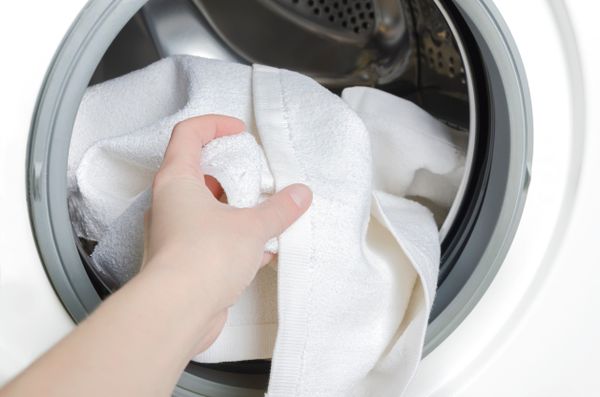
When it comes to cleaning performance, both top load and front load washers can effectively clean your clothes. However, there are some differences in the washing mechanisms that may influence the perceived cleaning performance:
Agitation Method
Top load washers typically use an agitator or impeller mechanism to agitate the clothes in the water. The agitator moves the clothes vigorously, creating a scrubbing action to remove stains and dirt. This agitation can be particularly effective for heavily soiled items or stains that require more intensive treatment. Front load washers, on the other hand, rely on the tumbling action of the drum and the gravity-driven movement of clothes through the water. The gentle tumbling action, combined with the use of higher spin speeds, helps to dislodge dirt and stains from the fabric. Front load washers are generally known for their ability to clean clothes effectively while using less water and detergent.
Water Usage
Front load washers typically use less water compared to top load washers. The reduced water level ensures that the detergent is properly concentrated and can effectively penetrate the fabric, resulting in thorough cleaning. The use of less water also contributes to the machine's energy efficiency.
Detergent Distribution
Front load washers have a distinct advantage when it comes to distributing detergent throughout the load. The design of the drum and the way clothes tumble helps to evenly distribute the detergent, ensuring that all garments receive adequate cleaning power. This can result in more consistent cleaning performance across the entire load. It's important to note that the effectiveness of the cleaning performance also depends on factors such as the detergent used, water temperature, wash cycle selection, and the specific features and technologies incorporated into the washer. Both top load and front load washers have evolved to include various wash cycles, temperature settings, and additional features to enhance their cleaning capabilities.
Ultimately, the cleaning performance of a washing machine depends on various factors, and both top load and front load washers can provide satisfactory results. Choosing the right washer type for your needs should consider other factors such as capacity, energy efficiency, features, and personal preferences.
Best Top Load Washer Picks
Now that we’ve highlighted some of the pros and cons, let’s look at some of our favorite top load washers reviews.
Best Overall
This LG top load washer allows you to expand the limits of your laundry room thanks to the LG SmartThinQ app. Select a cycle, start or stop the wash, and receive notifications about the progress of your cycle, all from your smartphone. It even works with Google Assistant and Amazon Alexa so you can manage your laundry with simple voice commands.
Unlike most top load washers, this LG model doesn’t include an agitator. Powerful jet spray, plus the tub and motor, rotate independently in opposite directions to create a powerful water flow for enhanced washing performance.
6Motion Technology uses up to six different wash motions to provide a smart cleaning experience that is gentle on clothes, but most importantly, this washer model uses about 30 percent less energy and half the amount of water used by regular top load machines.
➝ Learn More: LG Washers and Dryers Reviewed
Best Value Top Load Washer
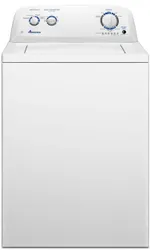
Shop This Amana Top Load Washer
Achieve a finish that leaves your clothes bright and clean with this top-load Amana washer. This washer model delivers a thorough clean with a Dual Action Agitator, which rolls clothes through the bottom of the wash basket. Its durable Porcelain Tub helps protect favorites from snags, while the Deep Water Wash Option adds the maximum amount of water for your laundry load so you can clean with confidence.
The Late Lid Lock gives you extra time to throw in any missed items before the Spin Cycle starts so no socks are left behind. The Delicates Cycle uses a slower spin speed and a gentle wash motion to clean delicate items, and eight wash cycles including the Extra Rinse Option adds improved rinse action to most wash cycles to help remove extra detergent.
⭐Featured Amana NTW4516FW Review:
I bought this machine for a new house, and I knew specifically I wanted a washer with an agitator to help my clothes get fully cleaned. This washer lived up to my standards and I love it!
➝ Learn More: The Best Top Load Washers that Rise to the Top
Best High End Top Load Washer
This LG washer model includes many of the same features as the best overall model, but with a smooth and elegant black stainless-steel finish.
Once again, TurboWash 3D creates a powerful water flow for a deep, thorough clean without the excessive churning you would get from a typical agitator. ColdWash technology uses cold water and enhanced wash motions to penetrate deep into fabrics, giving you cold water savings with warm water performance.
Powerful steam technology gently cleans fabrics to eliminate dirt, odors, and wrinkles, and you’ll enjoy getting your laundry done in less time with a spacious 5.0 cubic feet capacity.
⭐Featured LG WT7900HBA Review:
By far the best washer I've ever owned my clothes are truly clean with every wash!
➝ Learn More: 5 Best Top Load Washers with Top Marks
Best Front Load Washer Picks
Now, let’s check out our favorite front load washing machine reviews from top models.
Best Overall Washer
With this Samsung front load washer, Self Clean+ keeps your washer drum fresh and clean by eliminating 99 percent of bacteria, and your appliance will also send a reminder to clean the drum every forty wash cycles.
The Super-Speed setting uses advanced cleaning technologies to wash a full load of laundry in just 30 minutes, and the steam option acts as a powerful yet gentle stain removal treatment.
Additional features include:
- VRT Plus Technology
- Closet-depth fit and stackability
- Internal water heat
- 1200 RPM spin speed
- 10 wash cycles
- 5 temperature levels
- Child Lock
➝ Learn More: Samsung Washers and Dryers Reviewed
Best Value Front Load Washer
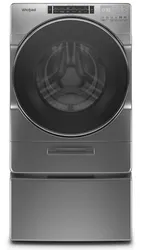
Shop This Whirlpool Front Load Washer
Whirlpool knows a thing or two about washers, and this Energy Star certified front load model is proof. with With a 5 cubic feet capacity, you can wash over three baskets of clothing in a single load and finish laundry fast. And for added convenience, you can skip the detergent step with the Load & Go dispenser. Simply add detergent once and skip refills for 40 loads.
The Presoak option lets you skip soaking outside of the washer. Extra time is added in the washer before the wash cycle, which starts automatically when the option is complete, and for a seamless look, the space-saving design with a closet-depth fit allows for more flexible installation options in your laundry space.
➝ Learn More: Whirlpool Washer and Dryer Reviews [+ Our Top Picks]
Best High End Front Load Washer
